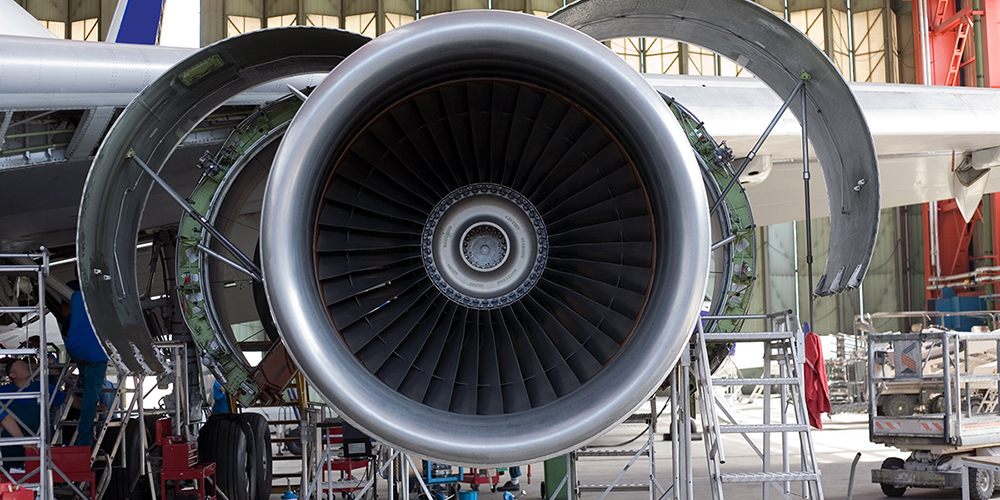August 1, 2017

The customer is responsible for maintaining and repairing aircraft and aircraft equipment. As part of this, they carry out magnetic particle inspection with MPI magnetic wet bench and 14A magnetic particles in Carrier II suspension vehicle.
This customer was having trouble maintaining the correct concentration of 14A magnetic particles in their mag particle bath.
They were checking the settlement volume at the start of each working shift to make sure the particle concentration was at the maximum value of 0.20 mL, but as the shift progressed the concentration would drop dramatically. For example, after one hour the settlement volume would drop 25% from 0.20 mL to 0.15 mL, and after four hours it would often drop another 25% to below the minimum recommended level of 0.10 mL.
Paragraph 3.3.2 of the Aerospace Material Specification AMS 3045E states:
“The concentration of magnetic particles in the vehicle shall be 0.10 to 0.40 mL of fluorescent particles in 100 ml of suspension, determined by mixing the test suspension thoroughly, filling a 100 ml calibrated centrifuge tube as specified in ASTM D 1966, allowing it to stand undisturbed for not less than 30 minutes, and reading, on the calibrated tube, the volume of particles settled from the suspension.”
For 14A particles dispersed in Carrier II, we recommend particle concentration to be between 0.15 and 0.25 mL since concentrations above or below this limit lead to inferior inspection results.
To find the maximum level of particles that could be present in the bath, to give the customer the most working/inspection time.
To find out why the settlement volume was dropping each shift. The customer was concerned the magnetic particles were becoming trapped within pipework, filters or the circulating pump.
There are several common reasons for particle concentration to decrease during magnetic particle inspections.
Drag out of particles during the inspection process. In addition to particles being aligned around a defect, it is not uncommon for some particles to collect on the background of a component, depending on its surface roughness and geometric shape.
Over magnetization causes excess particles to cling to the part and can occur where a component has different thickness or diameters of material.
Particles becoming ‘stuck’ in parts of the processing equipment, such as pipework, filters, pumps, etc. When you first fill a bath, It is not uncommon to find that you need additional particles to achieve the right settlement volume level.
Particles will adhere to a part as it is removed from a bath if the part has contaminants like oil, grease, dirt, scale, etc. on it.
To resolve this customer’s issues, we needed to understanding what was causing the settling volume to drop during each shift to allow the customer to maximize their mag particle bath life, and help the customer know when they need to add more 14A magnetic particles.
We started by educating our customer about the reasons for the depletion of magnetic particles within the MPI process. Based on this information, the customer carried out several tests to try to rule out potential causes:
The MPI suspension was drained from the bath so the filter could be checked. This check revealed that the filter was okay.
The agitating tube on the bottom of the bath was checked for cleanliness and, again, was found to be okay.
The central track with the coil and head shots was removed to enable removal of the filter. The filter outlet was checked for any signs of particles that had collected in this area. The area was found to be clear.
The pump inlet and outlet piping was checked and found to be okay.
Following all of these checks, a new mag particle bath was made in the tank and the bench was turned back on. A check was made for particle depletion after several hours and there was no sign of depletion.
The reason for this improved performance, even though no changes were made to the equipment, was a change in the way the concentration check was performed.
Our customer’s set-up included a closed spring valve at the end of the hose used to apply the ink suspension. Their normal practice was to keep this spring valve constantly open using a clip/peg. This meant the pump flow was not sufficient to properly agitate the ink suspension via the tube in the bath, resulting in particles falling out of solution and a low settlement volume.
In the short term, our customer changed their working practice based on Magnaflux’s support and advice so the valve is only opened during the application of the MPI ink suspension. Typically, this means applying the agitated ink suspension for around 2-3 seconds. The valve is then closed to allow continued agitation of the rest of the mag particle bath.
In the longer term, our customer is investigating a new pump design to eliminate any problems with pressure, irrespective of whether the valve is open or shut.
JOIN OUR MAILING LIST TO RECEIVE THE LATEST NDT INSIGHTS AND ARTICLES FROM MAGNAFLUX
JOIN OUR MAILING LIST TO RECEIVE THE LATEST NDT INSIGHTS AND ARTICLES FROM MAGNAFLUX
155 Harlem Avenue
Glenview, IL 60025, USA
Telephone: +1 847-657-5300
Contact Magnaflux Customer Service